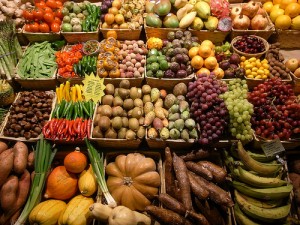USDA Focuses Programs On Latino Families
Deputy Administrator of the Supplemental Nutrition Assistance Program (SNAP) at the Food and Nutrition Service of the U.S. Department of Agriculture.
No one should go hungry in America, especially children. However, far too many Latino children and their families are experiencing hunger every day. At a time when so many are struggling to put food on the table, it is critical for Latino families to know about help that is available. In that spirit, the Department of Agriculture’s 15 nutrition assistance programs can make that difference as they encompass the nation’s critical safety net to combat hunger. It is a privilege for me to serve at the Department of Agriculture’s Food and Nutrition Service, where our mission is to provide that assistance to low-income children, individuals, and families each and every day.
The span of USDA’s nutrition assistance programs is so vast that we are now serving one of out every four people in the country. Our Supplemental Nutrition Assistance Program (SNAP), formerly known as the Food Stamp Program, helps more than 45 million people a month put food on the table, and our National School Lunch programs serve more than 31 million school children each school year. Other USDA Food and Nutrition programs include WIC for Women, Infants, and Children, of which more than 40% of clients are Hispanic, and the Summer Food Service Program, which serves to reach low-income children during the summer as it is their most vulnerable time of year for hunger due to their lack of access to regular school meals. However, all of these programs work in concert with each other depending on the need and circumstance.
That USDA has 15 nutrition assistance programs is a critical message for Latinos who are eligible for these programs, as low-income Latinos often face the paradox of both hunger and obesity. According to USDA’s 2009 Economic Research Service Food Security report, Latinos experienced food insecurity at a rate of 26.9 percent – almost double the national average rate of 14.7 percent. This means that in 2009, 3.6 million Hispanic households struggled to obtain nutritious food. As a result, Hispanic families are at a higher risk of experiencing hunger. Similarly, obesity rates among Hispanics are also higher than obesity rates for the general population. Over 30% of Hispanic adults and 40% of Hispanic children are either overweight or obese, which further augments the hunger and obesity crisis.
However, despite the ability of these programs to positively change people’s lives, many Latinos who are eligible for USDA Food and Nutrition Service programs are not participating on our programs. The Latino participation gap in SNAP illustrates this. While SNAP is the nation’s largest anti-hunger program, only 56% of SNAP-eligible Latinos are receiving SNAP benefits. This means that millions of eligible Latinos are not receiving additional help to buy food each month. SNAP dollars provide support to buy healthy, nutritious food when dollars are stretched, reflecting how the program enables struggling individuals and families to get back on their feet during hard times.
For many low-income Latino families whose budgets are tightly squeezed, USDA nutrition programs offer crucial opportunities. Increasing USDA nutrition assistance program participation among Hispanics is essential to improving food security in the Latino community.
To address this issue, the USDA Food and Nutrition Service has partnered with the USDA Center for Faith Based and Neighborhood Partnerships to create La Mesa Completa, a comprehensive USDA nutrition program Latino partnership and outreach plan. La Mesa Completa, or the The Complete Table, generated from a series of community roundtables we hosted last year in states holding high numbers of food insecure Hispanic households, namely California, New York, New Jersey, Texas, Florida, Illinois, and Arizona. We focused on locations with large numbers of food insecure households and low SNAP program participation in order to directly discuss with communities their recommendations and feedback on policy, program access, and administrative issues to improve customer service. This invaluable feedback has already enabled USDA to reach more eligible families and partner with a greater variety of organizations across the country.
The Obama administration is committed to providing greater access to USDA nutrition assistance programs and ensuring that healthy nutrition is available to all Americans in need. The President has issued a goal of ending childhood hunger in the U.S., and the First Lady is a spokesperson on the issue of childhood obesity through the incredible effort of Let’s Move! Through these efforts, and the dedicated work conducted around the country by numerous communities and partnerships, we can together contribute towards the urgent need to realize this dream.
Ms. Pino was appointed in her role by President Obama and Secretary of Agriculture Tom Vilsack on May 9th, 2009.


